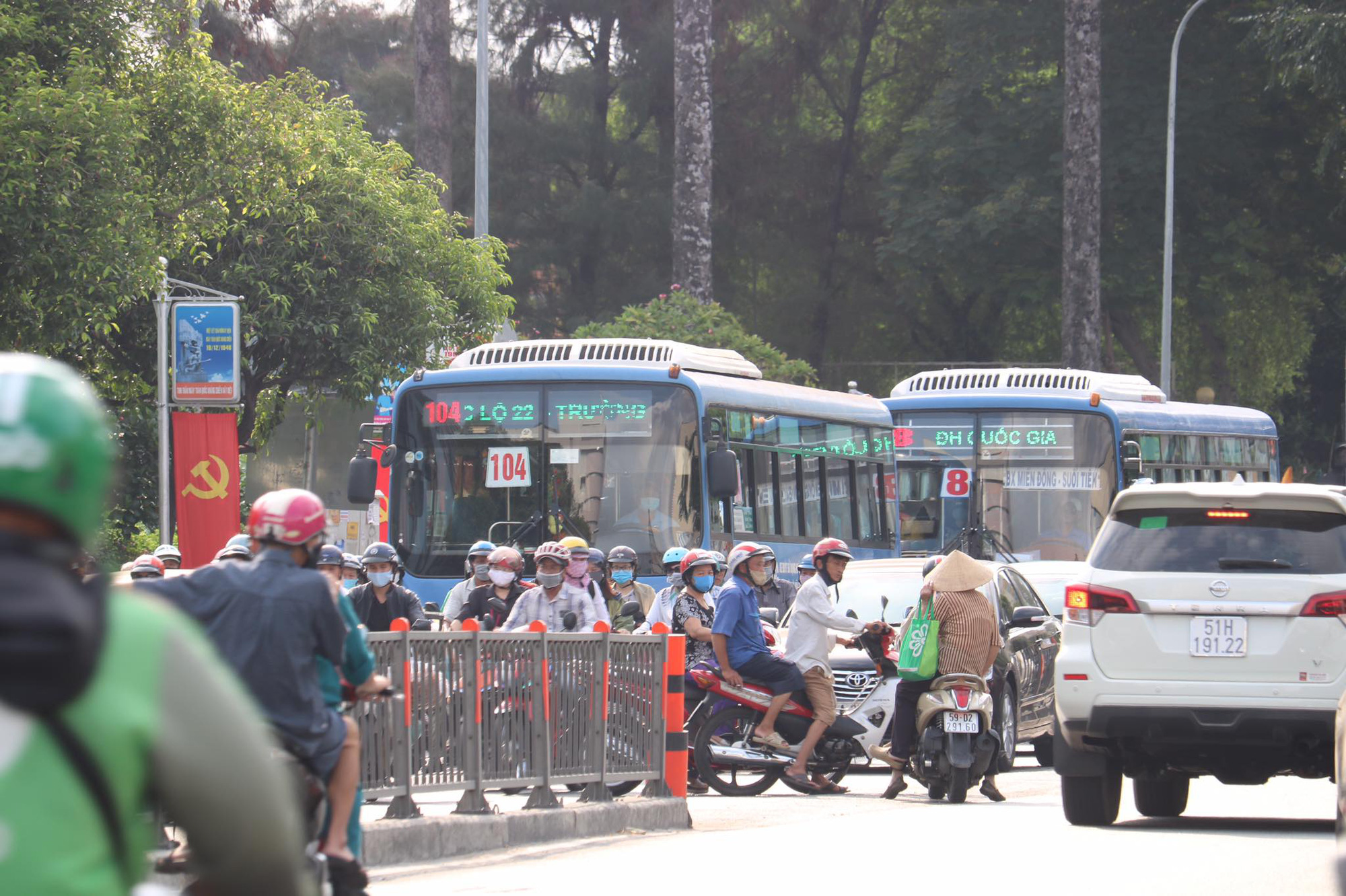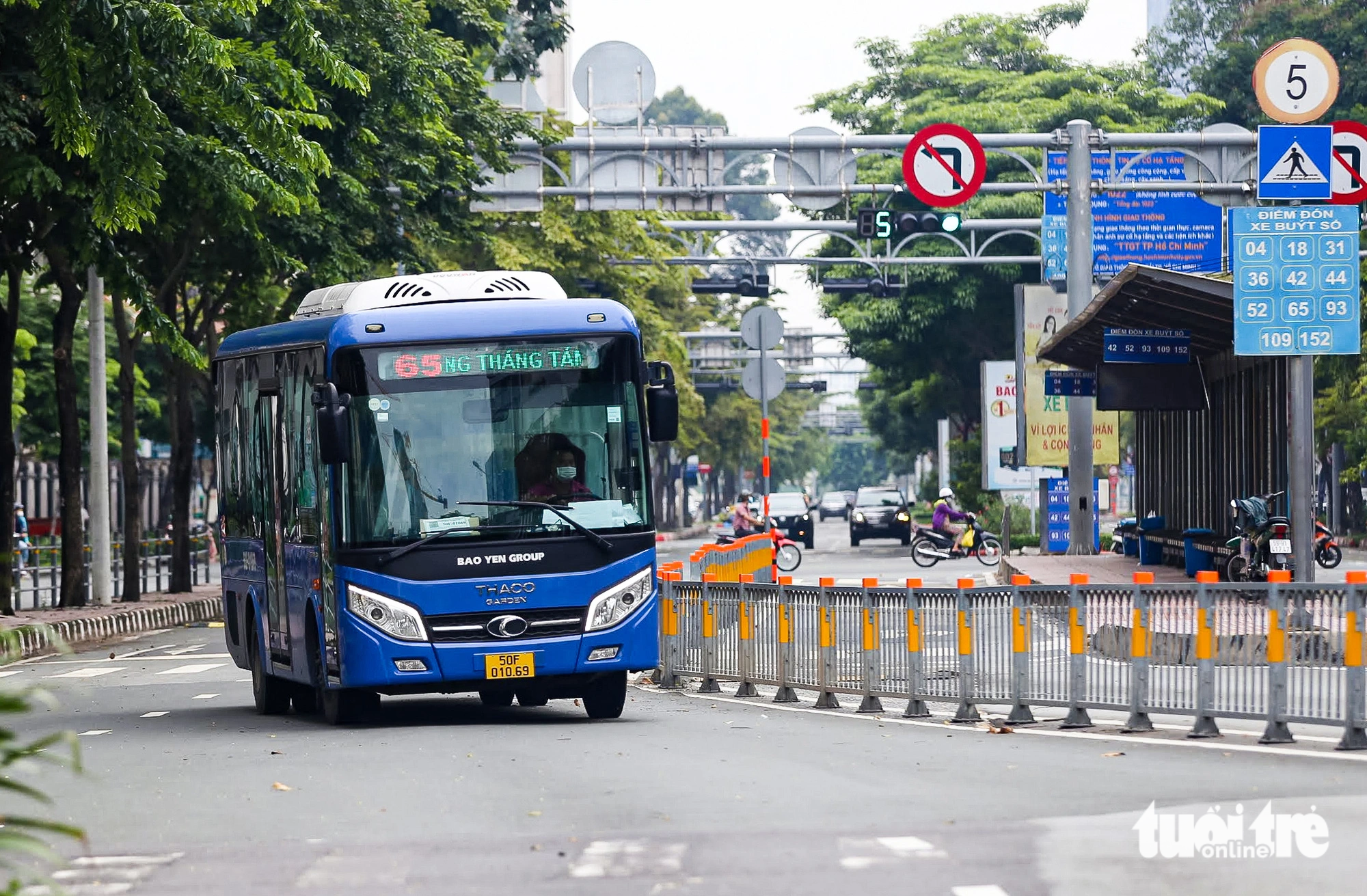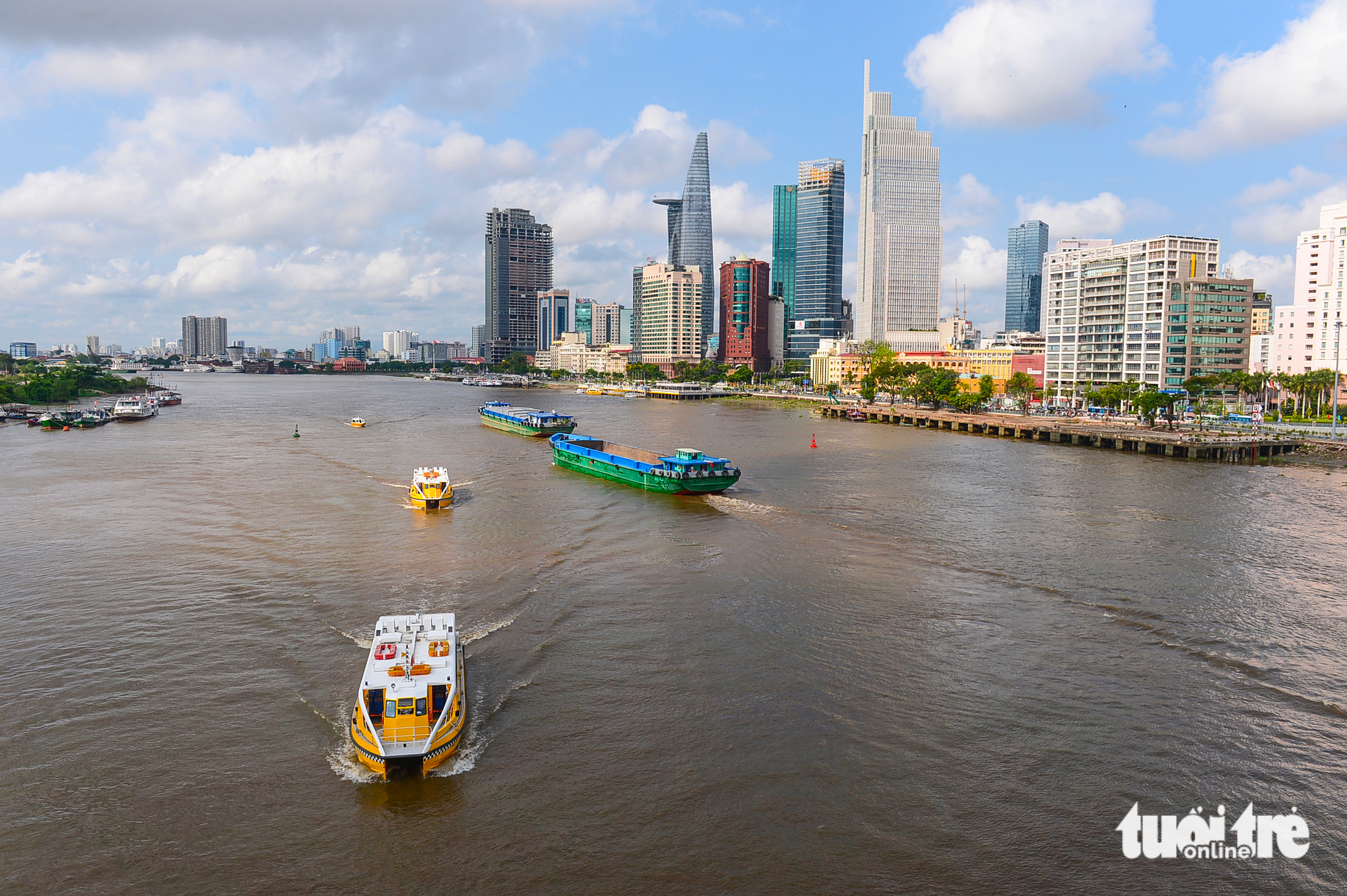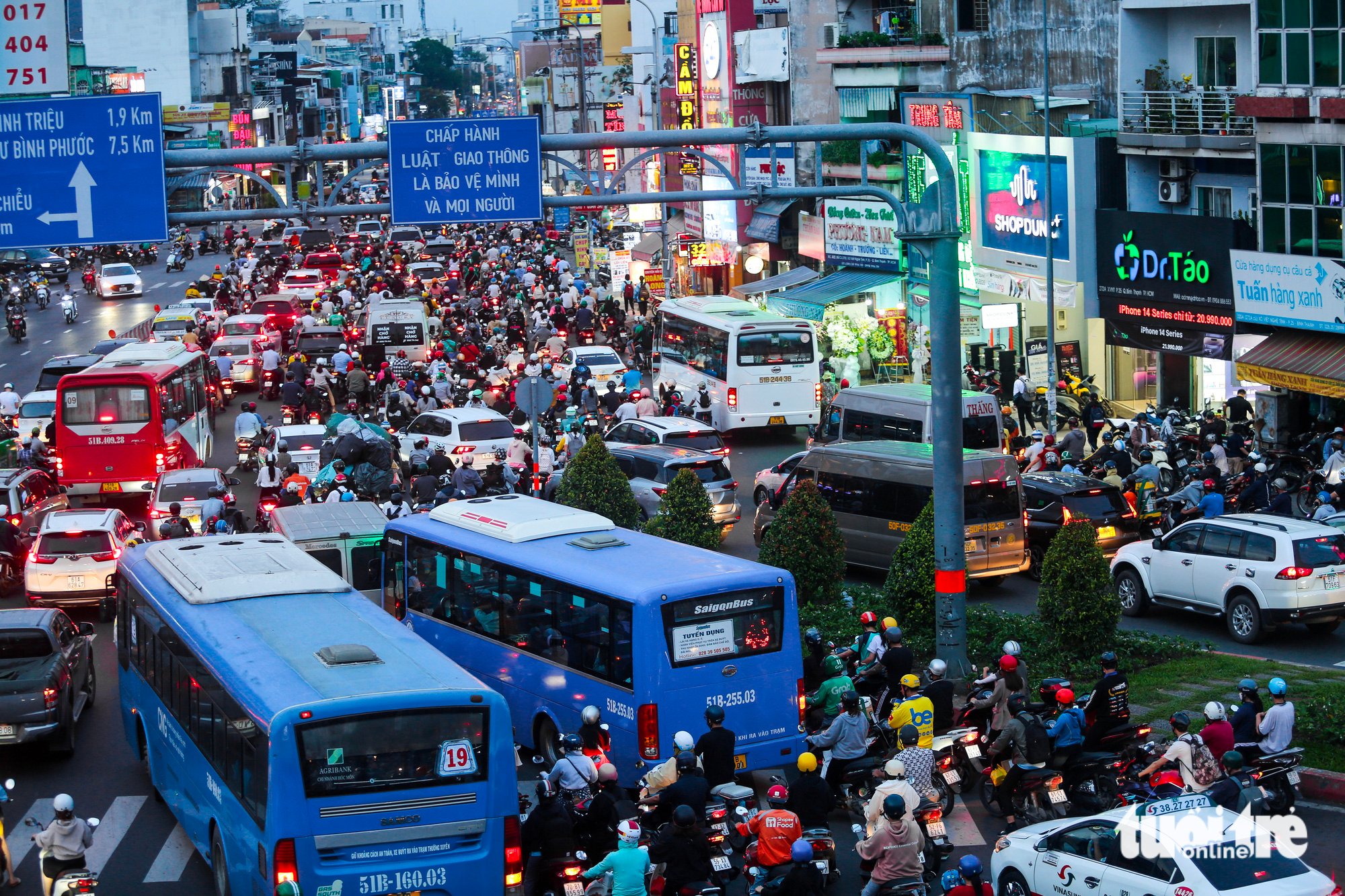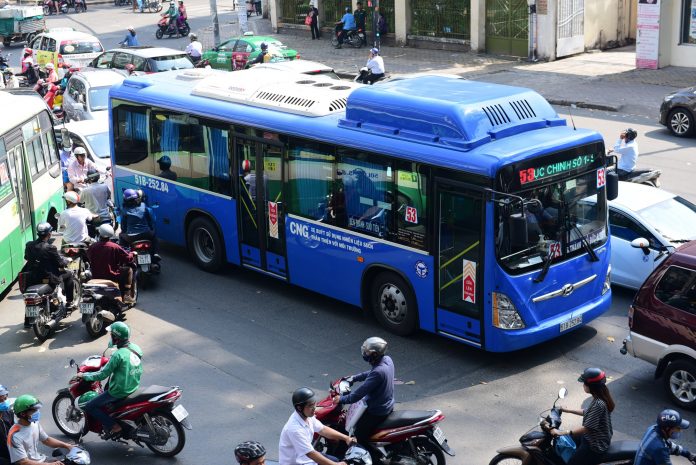
I took my first solo bus ride in Ho Chi Minh City, and it was quite a big step for me. The bus network in the city has always been a mystery to me, but after watching the buses pass by my street for years, I finally decided to give it a try.
The bus system plays a crucial role in public transportation in Vietnam’s urban areas, especially in cities where other transportation options are limited. However, for someone unfamiliar with the system, it can be quite intimidating.
To overcome my fear of taking the bus, I did some research and received advice on how to use the system. Armed with this knowledge, I embarked on my bus adventure from Nguyen Xi Street in Binh Thanh District to District 1. And let me tell you, it was a great experience.
|
|
| Buses in Ho Chi Minh City. Photo: Ngoc Phuong / Tuoi Tre |
Initially, I spent 30 minutes browsing the bus website, buyttphcm.com.vn, before my wife gave me the simplest advice ever: “Use Google Maps.” And it turned out to be the most comprehensive tool for bus information. All I had to do was input my destination, and Google Maps would provide me with the relevant bus stop and available bus options. It made the whole process a breeze.
In Vietnam, buses are identified by numbers, which are prominently displayed on the front, side, and back of the bus. Some buses have painted numbers, while others have electronic displays. This distinction usually depends on the age and size of the bus.
My previous experience with taking a bus in Vietnam was back in 2012 when a friend took my son and me on a day trip to Cu Chi on a local bus. I remember paying the conductor for the ticket as he walked down the center of the bus. But now, it’s a different story.
When boarding most buses in Ho Chi Minh City, you’ll find a plastic box and a basic electronic ticket machine. To buy a ticket, you simply insert VND7,000 into the box and press the green button. A compact ticket is then printed, and you tear it off from the machine before finding a seat, if available. It’s that easy. (US$1 = VND24,430)
Getting off the bus is also straightforward. There are red buttons with the word “Stop” in English located around the bus. As you approach your destination, you press the button, and the driver will stop at the next bus stop for you to exit.
During my bus ride, I took note of the pros and cons of using the bus. There were plenty of advantages, but the only downside was that it took longer compared to riding a motorbike or taking a taxi. For my 5km journey from home to the city, it took about an hour, while a motorbike trip would only take 20 minutes and a taxi ride around 30 minutes.
|
|
| A No. 65 bus in Ho Chi Minh City. Photo: Chau Tuan / Tuoi Tre |
The efficiency of the bus network depends on the routes and traffic conditions, shaping the overall experience. For example, my 3km commute from home to work requires walking approximately 1km to reach the bus stop, which makes up a significant portion of the journey. In contrast, walking directly to work would take around 30 minutes. In this case, the bus is not the most practical option.
I also conducted a similar experiment on the Saigon Waterbus in the past. Although it provided a peaceful and enjoyable experience, the journey from Hiep Binh Chanh Ward to Pearl Plaza took over an hour, while riding my motorbike would only take 15 minutes. It was not the most efficient option for daily commuting, but it was a great way to avoid traffic during peak hours.
|
|
| Water buses in Ho Chi Minh City. Photo: Quang Dinh / Tuoi Tre |
The bus I took had air conditioning and was very comfortable. Since I was traveling during a quiet period, there were only a few people on the bus, which made it even more comfortable. However, I have seen packed buses during peak hours, as the cheap price attracts many passengers.
|
|
| Buses commuting during rush hour in Ho Chi Minh City. Photo: Chau Tuan / Tuoi Tre |
As an expatriate living in Ho Chi Minh City, my bus adventure made me reflect on how tourists experience the city and explore Vietnam. Transportation costs can be a significant factor for tourists, and opting for local buses can provide them with a unique and affordable way to traverse different parts of the city. With the help of Google Maps, tourists can easily navigate the bus network and truly immerse themselves in the authentic essence of Ho Chi Minh City.
Moreover, Vietnam’s bus network extends beyond city travels. You can take local buses between regional centers, allowing you to explore different places at affordable prices. For example, from Ham Nghi Bus Station in District 1, you can reach destinations like Tay Ninh, Bien Hoa, and even My Tho. It opens up new possibilities for adventures and encounters with local people.
As I walked from Ham Nghi Bus Station, I couldn’t help but be impressed by the convenience and affordability of traveling by bus in Ho Chi Minh City. It costs only a fraction of what a taxi ride would cost, and it’s much less stressful. Taking the bus is not only better for the environment but also provides a unique experience and enhances your journey across this beautiful country.

